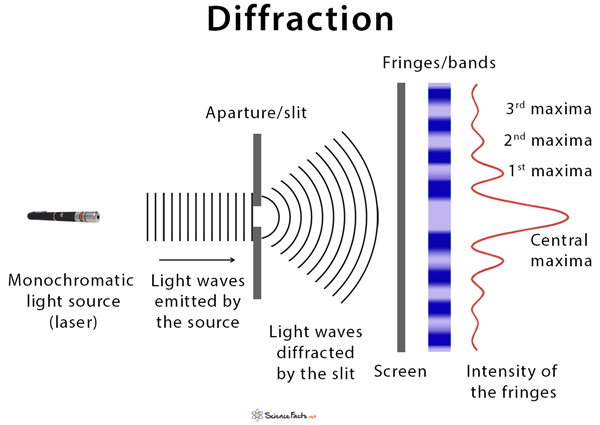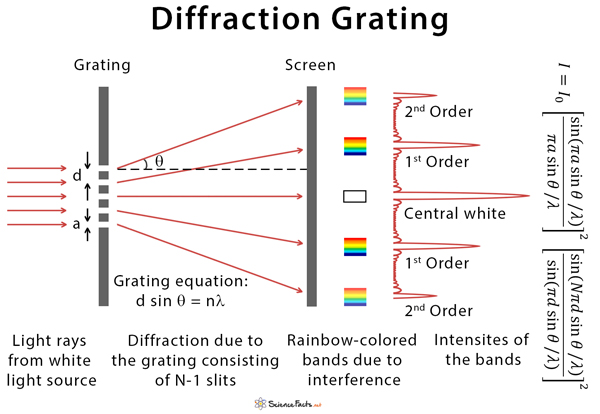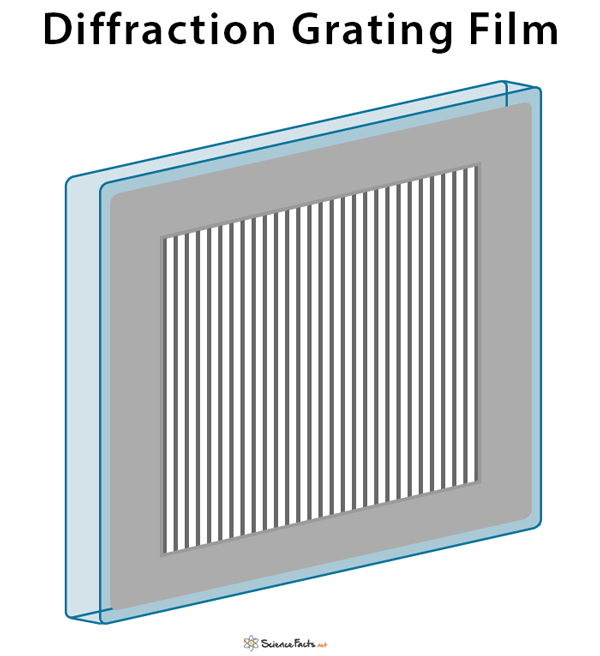According to Huygens’ principle, the aperture or slit diffracting the waves becomes the secondary source of waves. The diffracted waves fall a screen and form a pattern known as a diffraction pattern. It consists of alternating dark and bright fringes spread across the screen. A bright central fringe is observed at the center, surrounded by several maxima and minima. Diffraction experiments have shown that light has wavelike properties. Diffraction experiments can be performed with one slit (single-slit diffraction), two slits (double-slit diffraction), or multiple slits (diffraction grating). There are two types of diffraction: Fresnel diffraction and Fraunhofer diffraction. The history of diffraction goes back to 1660 when Italian mathematician and physicist Francesco Maria Grimaldi observed it for the first time and subsequently coined the term. The condition for maximum intensity is the same as that of the double-slit or multiple-slits. However, with many slits, the intensity maximum is very sharp and narrow, providing a high resolution for spectroscopic applications. As a result, the peak intensities are much higher for the grating than for the double slit. Gratings are generally better than prisms as they are more efficient and provide a linear dispersion of wavelengths. The incident light does not suffer absorption that is observed in prisms, which limits their wavelength range.



